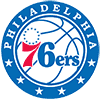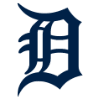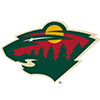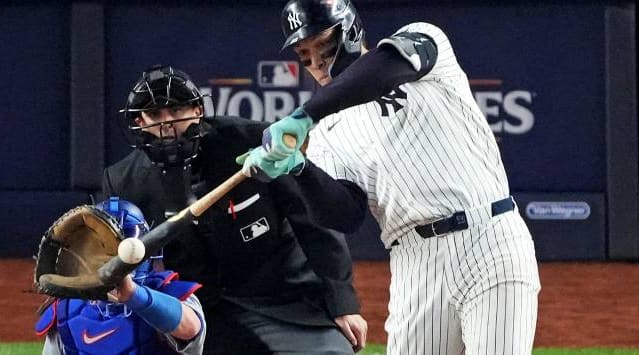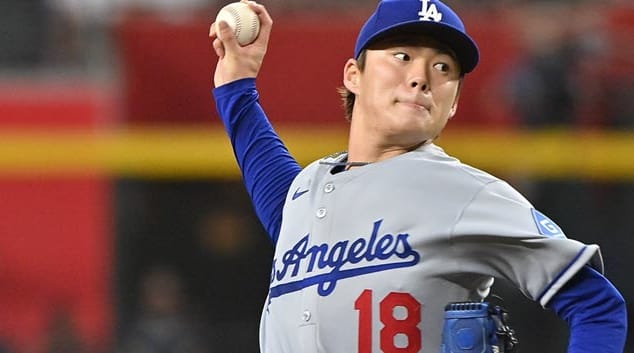The NFBC Main Event is the mother of all fantasy baseball competitions. It is a grueling 26-week marathon that requires in-depth analysis, balance, patience, a pinch of luck, and a healthy helping of old-fashioned intuition. Every March, 420 of the brightest fantasy minds gather across three cities to draft and compete for the coveted $125,000 grand prize and the pride of becoming the champion in a class of heavyweights.
Last season was a magical one for me. I won four of my five NFBC 12-team leagues and have done well in that format since I started playing NFBC nearly a decade ago. Over the last two seasons, I have made legitimate runs at the overall title. The 12-team format is where I am most comfortable. But comfort can sometimes lead to complacency, which can veer us further from our true goals. For me, that goal is to be perennially competitive in 15-team leagues like the NFBC Main Event. Winning a league – and even more so, the overall prize – requires a deep knowledge of the player pool as well as minor league prospects, tenacity in free agent bidding (FAAB), and being able to adapt on the fly during a high-anxiety live draft. It also involves a bit of good fortune. The injury bug is inevitable, but we are all aware that some players are more injury-prone than others.
Last March, my partner Andrew Moody and I arrived to the Main Event draft in Las Vegas with a rudimentary plan
The NFBC Main Event is the mother of all fantasy baseball competitions. It is a grueling 26-week marathon that requires in-depth analysis, balance, patience, a pinch of luck, and a healthy helping of old-fashioned intuition. Every March, 420 of the brightest fantasy minds gather across three cities to draft and compete for the coveted $125,000 grand prize and the pride of becoming the champion in a class of heavyweights.
Last season was a magical one for me. I won four of my five NFBC 12-team leagues and have done well in that format since I started playing NFBC nearly a decade ago. Over the last two seasons, I have made legitimate runs at the overall title. The 12-team format is where I am most comfortable. But comfort can sometimes lead to complacency, which can veer us further from our true goals. For me, that goal is to be perennially competitive in 15-team leagues like the NFBC Main Event. Winning a league – and even more so, the overall prize – requires a deep knowledge of the player pool as well as minor league prospects, tenacity in free agent bidding (FAAB), and being able to adapt on the fly during a high-anxiety live draft. It also involves a bit of good fortune. The injury bug is inevitable, but we are all aware that some players are more injury-prone than others.
Last March, my partner Andrew Moody and I arrived to the Main Event draft in Las Vegas with a rudimentary plan for the first five rounds: grab three power bats who also steal a handful of bases and two ace-level anchor starting pitchers. We had our list of breakout mid-round pitchers to target, as well as several recently underwhelming veterans that we believed were primed for bounce-back campaigns, including the likes of Mark Teixeira, Brandon Phillips, and Kendrys Morales – all of whom had ADPs (average draft positions) after Round 18 of this deep, 30-round beast.
Andrew and I worked well together and were happy with our squad heading into the season. Led by our first two picks, Paul Goldschmidt and Bryce Harper, our team was in first place in our league by a comfortable margin and was 'in the money' in the overall standings for five months, only to lose momentum in September and finish second in the league and out of the money overall. The lessons learned were numerous, but the primary one was recognized almost immediately. We overcompensated early on offense and failed to draft a workhorse ace pitcher to provide a solid base for our pitching categories.
Balance with your Ace
Top tier starting pitchers are a highly sought-after commodity among trendsetting NFBC veterans. In these live events, popular starting pitchers in the first 15 rounds (225 players overall) are typically taken a round or two before the NFBC's consensus ADP. Everyone wants to find a gem like Dallas Keuchel in the 16th round, but strictly relying on late-round pitchers who may emerge is a dangerous game. Take a look at the top dozen ranked starters over the last few years and you will notice just how consistent – and valuable – the workhorses are. Don't be afraid to use an early-round pick on them.
Goldschmidt was our consensus target for the first round drafting out of the five-slot. We paired him with Bryce Harper in the late second and Justin Upton in the early third round since the top tier of pitchers after Clayton Kershaw was long gone – David Price, Felix Hernandez, Chris Sale, and Stephen Strasburg. After our power trio of Goldschmidt-Harper-Upton, we took Brian Dozier in the fourth round and Craig Kimbrel in the fifth. When considering Kimbrel, we did not feel comfortable with the starters available (Jeff Samardzija, Julio Teheran - bad, Gerrit Cole, Sonny Gray - good). We risked waiting two rounds for our targets Jacob deGrom, Michael Wacha and Jake Arrieta, but all were snagged before we had the chance. Five rounds through a gut-wrenching draft and we still did not have that anchor we coveted, opting to play chicken instead.
Our first starting pitcher was James Shields in the sixth round. A durable innings-eater in pitcher-friendly Petco Park, but hardly a staff anchor. The next few rounds chasing pitchers was tough. We settled on Masahiro Tanaka and Garrett Richards in Rounds 8 and 9, fully knowing the risks involved, all while missing on deGrom, Wacha and Arrieta by just a couple of picks. Our powerful offensive boded well for the hitting categories, but the need for a solid pitching foundation with that ace was ever-apparent.
We ended up with the following staff (listed by round): Shields (6), Tanaka (8), Richards (9), Mat Latos (14), Derek Holland (15), Shelby Miller (17), Carlos Rodon (18), and Hector Santiago (27).
Miller, Rodon and Santiago provided solid value during parts of the season, but their inconsistency was part of our shortcomings in the pitching categories, which ultimately led to us losing the league. Rodon had a great second half, but pounded our WHIP to the tune of 1.44. Santiago imploded after the All-Star break (2.33 ERA before, 5.47 ERA after) and Miller went on a destructive 24-game winless streak that ran from May through October. Latos was a disaster, and he ominously started off April by serving up seven earned runs in two-thirds of an inning. We did not add any starting pitchers of significance in FAAB, and saved nearly a quarter of our $1,000 FAAB budget waiting for rookie hurler Steven Matz to get called up (he hit the DL after two starts for the Mets). We added Ubaldo Jimenez early on, but timing his good starts was a difficult venture (4.19 ERA in 85 IP). Inevitably, not having an anchor, or the right supporting cast on the staff had us chasing volatile two-start options on the waiver wire, which ultimately kept our ratios and strikeout numbers from being competitive.
Patience is a virtue
Andrew and I hit on several of our hitting targets throughout the draft. Many of these hitters were commonplace throughout my winning NFBC 12-teamers - A.J. Pollock in the 11th round, Pedro Alvarez 12th, Teixeira 20th, Morales 21st and David Peralta in the 26th. We appeared quite prescient adding Maikel Franco for $4 in FAAB one week before the Phillies called him up. Because of Franco's pedigree and the fact that he had just become available in most leagues, Franco's average bid price exceeded $250 the following week. We also hit with Delino DeShields Jr., Stephen Piscotty, and Jung-Ho Kang – hitters we added for under $10 apiece before they were on our competitors' radars. For the first three months of the season, our team was in the top one percent in four of the five hitting categories, so we did not bid heavily for Carlos Correa, opting to save that money for Matz.
Despite our success, my lack of patience negatively impacted our hitting stats and allowed a couple dozen in the field of 420 players to catch and pass us in a few of the hitting categories when our offense cooled mid-season. We dropped Kang in early July, a week before fellow Pirate Josh Harrison suffered a thumb injury that led to full-time, profit-heavy at-bats from Kang over the next few months. We mistimed the market on J.T. Realmuto, who I fawned over in spring training because of his stolen base contributions at a position that rarely provides them. On my recommendation, we made a marginal move to add catcher James McCann the Sunday before Realmuto exploded with a homer and six RBI on a hot August day in Miami. Interestingly enough, we added and dropped Roberto Osuna three times before he ultimately took over as the closer in Toronto, netting us a valuable 18 saves and a sub-1.00 WHIP.
The lesson learned for us was an obvious one. Realmuto, Kang, and even Osuna were all players we were intrigued with prior to the start of the season. My itchy waiver-wire finger was always shopping for new deals. My lack of patience and vision allowed shiny new objects on the free agent list to appear more valuable than players we believed in who were either mired in tiny slumps or whose playing time wasn't quite clear yet. Andrew is a sharp and seasoned player - the youngest winner of a $25,000 fantasy baseball prize nearly a decade ago, before he could even vote for President – but I was able to convince him to dump players who I believed had worn out their welcomes on our squad. Being able to step back from the day-to-day grind allows for wiser decisions that correspond with our assessment of talent and imminent playing time. It is imperative to trust our instincts on players and to not let small sample sizes and slumps cloud our judgement.
Looking ahead
None of our yearly strategies are ever the same, but the core tenets hold true each and every season in the world of high-stakes fantasy baseball. Grind tenaciously at FAAB and stay a week ahead of your competitors as eventually, more often than not, talent meets opportunity and playing time. Trust your research and scouting ability, and do not let a small sample size affect your overall view of a hitter or pitcher that you believe in. Most importantly, blend that scouting and research with your baseball intuition. If you see it, and you feel it, then you should believe it. Hope to see you at the NFBC this March!
This article appears in the 2016 RotoWire Fantasy Baseball Guide. Order the magazine here!










